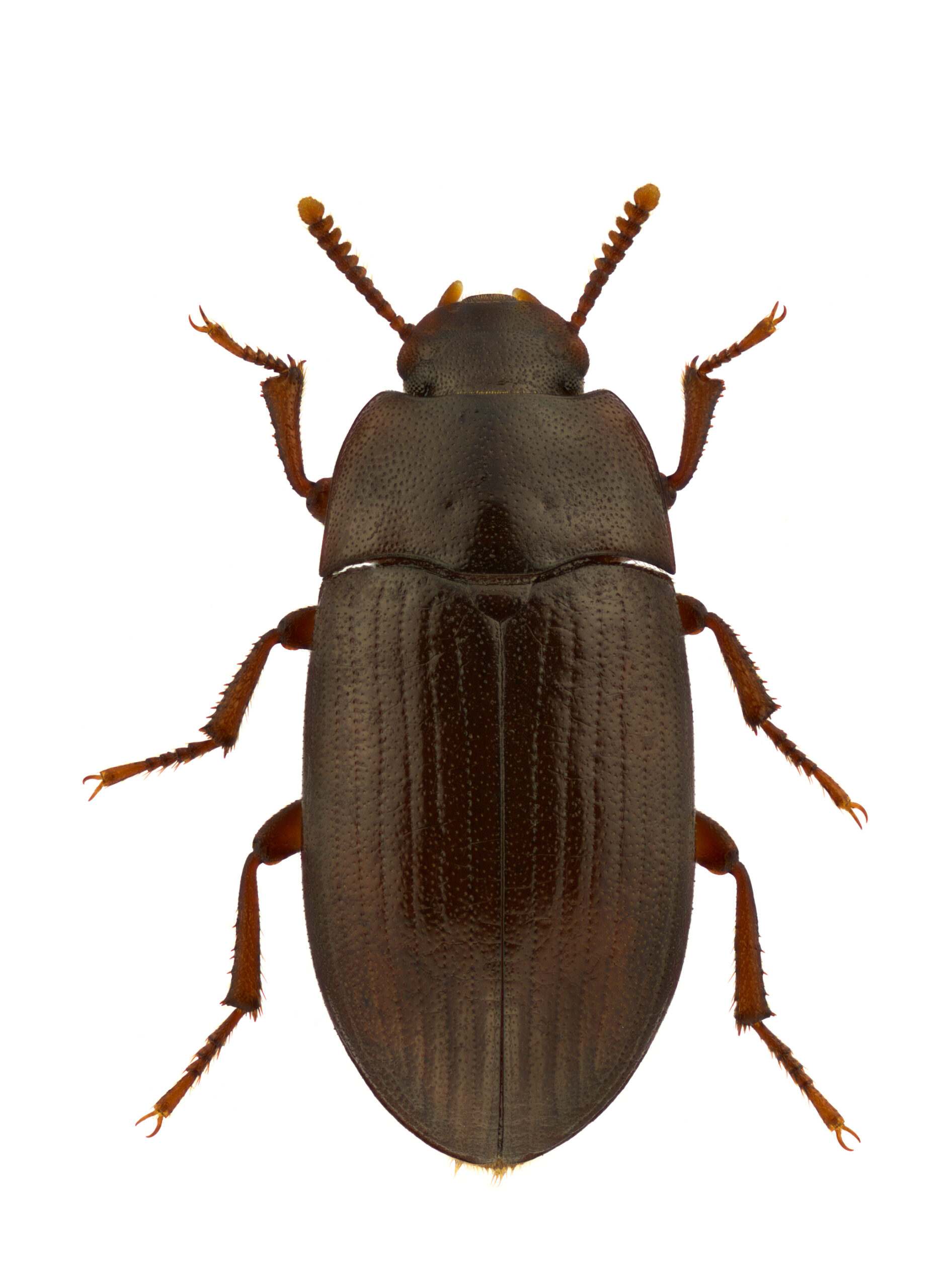Darkling Beetles
The darkling beetle or lesser mealworm, Alphitobius diaperinus, is rapidly becoming more of a nuisance in poultry operations. Large populations of beetles sometimes migrate to nearby residential areas, especially after litter cleanout. Although the beetles can fly up to a mile, most crawl at night from litter disposed in fields neighboring homes.
Beetles are often associated with poultry feed, preferring grain and cereal products that are damp, moldy and slightly out of condition. Adults and larvae consume poultry feed in amounts costly to the producer. The larvae are known as lesser mealworms.
Control of this beetle has become increasingly important. Adult beetles and larvae act as reservoirs for many poultry and human pathogens and parasites. Researchers have found that this beetle has transmitted acute leucosis (Marek’s disease) to chickens.
Marek’s disease usually affects 3 and 4 month old birds. The clinical signs include various degrees of paralysis, most easily observed in legs and wings, as well as droopy wings, gasping, loss of weight, pallor and sometimes diarrhea. Birds severely affected may be found lying on their sides with one leg stretched forward and the other held behind.
The disease affects both broiler and egg laying poultry. Losses can reach 2 percent of the flock per day, with mortality at 30 percent of the flock within a few weeks.
This disease is highly contagious and has been shown to be airborne. Contamination may persist in the environment because the darkling beetle may serve as a reservoir for residual contamination.
 Other diseases spread by this beetle include the causative agents of avian influenza, salmonella, fowl pox, coccidiosis, botulism and Newcastle disease. The beetle also spreads cecal worms and avian tapeworms.
Other diseases spread by this beetle include the causative agents of avian influenza, salmonella, fowl pox, coccidiosis, botulism and Newcastle disease. The beetle also spreads cecal worms and avian tapeworms.
In the poultry house, the darkling beetle can lay up to 800 eggs in litter during a 42-day period. Eggs develop into larvae in 4 to 7 days. The life cycle requires between 42 to 97 days, depending on temperature and other factors. Adult beetles live 3 months to a year. The adults are about 1⁄4 inch long and black or very dark reddish brown.
The larvae are yellowish brown (wireworm-like) and up to 3⁄4 inch long. They accumulate in the dark corners of manure or litter, especially under sacks, in bins or in places where feed is stored. Pupation occurs in the litter, soil and side walls of poultry houses. The larvae often migrate throughout the litter seeking pupation sites.
Adult chickens and chicks are more likely than turkeys to eat the beetles and their larvae. Rather than providing “extra protein” in the diet, consumption actually lowers feed conversion and rate of gain, according to research.
Hide Beetles
Mature larvae of the hide beetle, Dermestes maculatus, develop on chicken carcasses in the facility and have the habit of boring into various hard surfaces to pupate, preferring softwoods. Some may climb 24 to 36 feet and bore into wood posts, studs and rafters, seriously weakening and “honey-combing” these structures.
The larvae are especially troublesome in poultry houses, damaging yellow pine, foam insulation, sytrofoam air baffle boards, paneling, drywall and even PCP (Penta Ready) chemically treated wood, in some cases. Larvae emerge from the litter, climb the walls and bore into soft building material.
Hide beetles are larger than darkling beetles, about 1⁄3 inch long, dark brown on top, with a mostly white undersurface (belly). Each female lays about 135 eggs, which hatch in 12 or more days.
The larvae are thickly covered with long, brown hairs, grow to about 1⁄2 inch long and have two spines on top near the tail end, which curve forward. The life cycle requires 40 to 50 days.
Reasonable control has been achieved by applying tetrachlorvinphos (Rabon®) 50% WP in the dry form to building walls. Make treatments with an electrostatic duster to negatively charge the particles, which enables it to stick to the wall surface better.
The best time to treat for darkling and hide beetles is after manure removal.
By: Jeffery K. Tomberlin and Bart Drees

